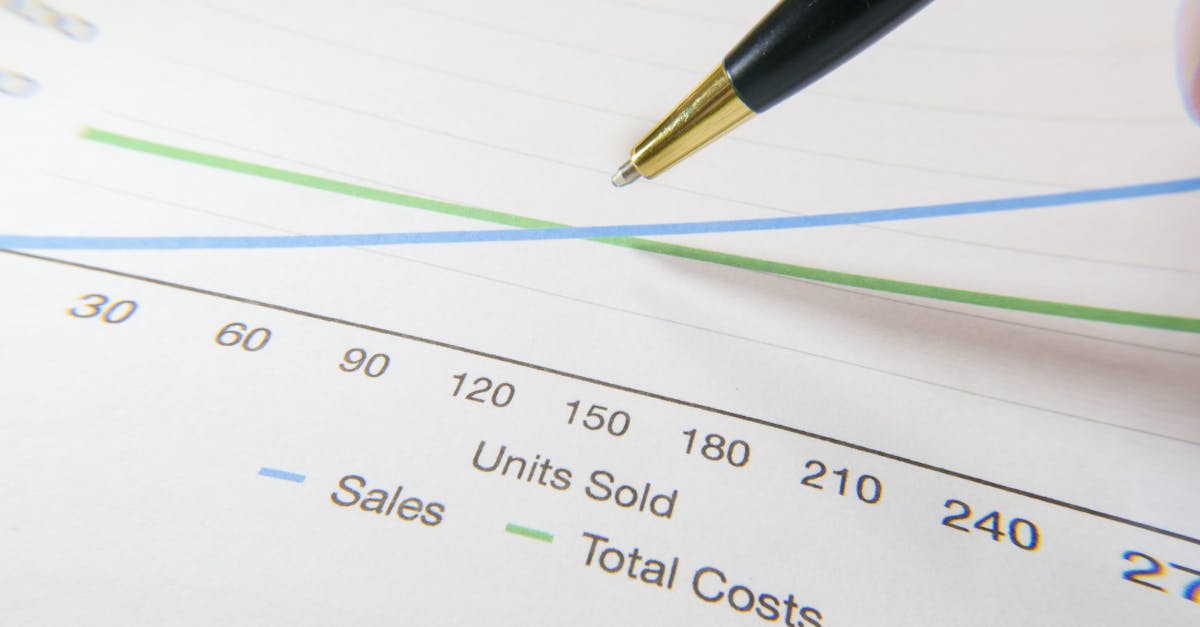Key Takeaways
- Business Process Automation (BPA) revolutionizes social media management by automating repetitive tasks like scheduling, posting, and engagement, saving time and increasing efficiency.
- Automated tools ensure consistency across platforms, enabling businesses to maintain a steady posting schedule and build trust with their audience even during busy periods.
- AI-powered features enhance engagement by providing instant responses to routine queries, monitoring interactions in real-time, and prioritizing urgent messages for faster replies.
- Data-driven insights from BPA tools simplify analytics, offering performance reports that highlight trends and optimize strategies based on measurable results.
- Choosing the right BPA tool depends on your goals, such as content volume, visual focus, or advanced analytics needs; popular options include Buffer, Hootsuite, Sprout Social, Later, and Zoho Social.
- Balancing automation with personalization is crucial to avoid over-automation risks while maintaining authentic connections with audiences through tailored content and thoughtful interaction.
Managing social media can feel like a never-ending task. With over 4.9 billion active users globally, staying consistent across platforms is crucial but time-consuming. That’s where Business Process Automation (BPA) steps in to revolutionize how we handle scheduling, posting, and engagement.
By automating repetitive tasks, we free up valuable time to focus on creating impactful content and building authentic connections with our audience. BPA tools not only streamline workflows but also ensure posts go live at optimal times and engagement doesn’t fall through the cracks. In today’s fast-paced digital world, automation isn’t just helpful—it’s essential for scaling success efficiently.
What Is BPA and Its Role in Social Media Management?
Business Process Automation (BPA) refers to the use of technology to automate repetitive tasks, reducing manual effort and increasing efficiency. In social media management, BPA simplifies scheduling, posting, and engagement activities. It eliminates time-consuming processes like manually publishing posts or monitoring multiple platforms for interactions.
We often face challenges managing various social accounts simultaneously. BPA tools help by centralizing these tasks into one platform. For example, they allow us to queue posts for specific times across Instagram, Twitter, Facebook, and LinkedIn without switching between apps.
Engagement benefits from automation too. Tools powered by BPA can monitor comments or messages in real-time and even provide automated responses based on pre-set rules. While this doesn’t replace human interaction entirely, it helps maintain prompt communication during high-traffic periods.
Analytics also become more accessible through BPA systems. These tools generate performance reports that track likes, shares, clicks, impressions—and much more—across all connected platforms. This saves hours spent compiling data manually and provides insights faster than traditional methods.
Automation enhances consistency in branding as well. With pre-scheduled content workflows managed by BPA tools like Buffer or Hootsuite (to name a few), campaigns stay on track regardless of unforeseen delays or holidays.
While some might worry about losing authenticity through automation, we believe balance is key here. Using BPA ensures core administrative tasks are automated so creative energy focuses solely on crafting compelling stories that resonate with audiences instead of being bogged down by logistics.
Key Benefits Of Automating Social Media With BPA
Automation simplifies social media management, making it faster and more effective. By leveraging Business Process Automation (BPA), businesses can streamline operations and focus on strategies that drive growth.
Time and Resource Efficiency
Automated tools handle repetitive tasks like scheduling posts, responding to comments, or monitoring interactions. For instance, a scheduler can queue content across multiple platforms weeks in advance, saving hours of manual work each month. This allows teams to allocate those hours toward creating impactful campaigns.
Administrative workload decreases when automation takes over routine processes such as publishing or tracking engagement metrics. Teams no longer spend unnecessary time switching between accounts or apps, improving productivity while reducing costs.
Scalability becomes attainable with BPA solutions managing increased workloads without requiring additional staff. As businesses grow their digital presence, they maintain efficiency since automation adapts seamlessly to higher demands.
Enhanced Consistency and Engagement
Regular posting builds trust with audiences but requires consistent effort. Automated systems allow us to maintain a steady posting schedule even during busy periods. Missed posts become a thing of the past since pre-scheduled content ensures continuous visibility.
Engagement improves through features like automated responses that handle repetitive queries during peak times. These quick replies keep audiences engaged while freeing up resources for addressing complex concerns personally.
Monitoring tools track audience behavior in real-time so we can adjust strategies dynamically, enhancing interaction quality without added effort on our part.
Data-Driven Insights and Reporting
Accessing analytics instantly aids smarter decision-making processes. BPA generates performance reports detailing metrics such as reach, impressions, or click-through rates across all channels faster than manual methods could achieve.
Visualized data highlights trends early—whether it's identifying high-performing posts or spotting underperforming areas needing improvement—enabling targeted optimizations effectively based on evidence instead of guesswork.
Features To Look For In BPA Tools For Social Media
Automating social media management saves time and boosts engagement. The right Business Process Automation (BPA) tools streamline tasks like scheduling, posting, and interaction.
Scheduling and Posting Automation
Efficient scheduling features help maintain a consistent presence across platforms. Automated tools analyze engagement patterns to recommend optimal times for posting. This maximizes visibility without requiring constant monitoring. Tools offering mass scheduling let users plan multiple posts in one session, which is perfect for campaigns or seasonal promotions.
Cross-platform functionality allows simultaneous content sharing on networks like Facebook, Instagram, Twitter, and LinkedIn. This expands reach quickly while minimizing manual effort required to post individually.
For example, imagine planning an entire month's worth of posts in one afternoon. Instead of juggling different apps or calendars daily, BPA takes care of it all with just a few clicks.
AI-Powered Engagement Tools
AI-driven features simplify how we manage audience interactions. These tools can monitor comments or direct messages in real-time and respond automatically using pre-set templates for common queries. Faster response times improve customer satisfaction during high-activity periods.
Some systems even use sentiment analysis to prioritize replies based on urgency or tone—helpful when managing hundreds of messages after a viral post! Automating these responses reduces human error while maintaining professionalism.
Think about handling an influx of "Where can I find this?" questions after posting a sale advertisement; automated replies keep things running smoothly without overwhelming your team.
Integration With Multiple Platforms
BPA tools often integrate seamlessly with various social media platforms. A single dashboard controls everything from scheduling to analytics across accounts like Instagram and Twitter.
This unified interface eliminates the need to switch between apps constantly—a significant time saver for busy teams managing multiple profiles simultaneously.
Consider if you’re launching a product campaign on five networks at once: integrated systems simplify coordination by keeping all data accessible within one tool instead of scattered across separate logins or tabs.
Top Tools For Automating Social Media With BPA
Automating social media is much easier with the right tools. These platforms simplify scheduling, posting, and audience engagement while saving time.
Comparison of Popular BPA Platforms
Several platforms stand out for automating social media tasks effectively:
- Buffer: Buffer offers post-scheduling features that allow users to queue content across various networks. Its intuitive interface helps streamline workflows, making it beginner-friendly.
- Hootsuite: Hootsuite provides advanced capabilities like the AI-driven Best Time to Publish feature, which analyzes data to recommend peak posting times for maximum impact.
- Sprout Social: Sprout Social combines scheduling with content curation. It suggests industry-relevant articles based on audience preferences, helping diversify your posts.
- Later: Later focuses on visual planning, ideal for Instagram-heavy strategies. Its drag-and-drop calendar simplifies organizing campaigns visually.
- Zoho Social: Zoho integrates well with CRM systems and allows detailed performance tracking across all major platforms in a single dashboard.
Each tool has distinct strengths; choosing one depends on your specific needs and budget.
Choosing the Right Solution for Your Needs
Selecting a platform requires understanding your priorities:
- Content Volume: If managing multiple accounts or posting frequently is crucial, tools like Hootsuite handle volume efficiently.
- Engagement Monitoring: For real-time interaction tracking and automated replies, Sprout Social excels at maintaining active communication.
- Analytics Depth: Platforms such as Zoho Social provide comprehensive reports that help refine strategies using actionable insights.
- Visual Content Focus: Later suits brands emphasizing visuals by offering layout previews before publishing.
Assess tool features against goals like consistency or deeper audience analysis to identify the most fitting solution without overspending on unnecessary extras.
Challenges and Considerations When Using BPA for Social Media
Automating social media with BPA saves time and boosts efficiency, but it comes with challenges. Addressing these concerns helps us use automation effectively without losing the human touch.
Avoiding Over-Automation
Over-automation risks making content feel robotic or repetitive. Users often notice when posts lack personality, which can harm engagement. Automation tools like Buffer simplify scheduling, but relying solely on automated posting may result in generic messages that fail to connect with audiences.
To avoid this, we should combine automation with manual input. For instance, while automating a consistent posting schedule is helpful, manually adding captions tailored to current events or trends keeps content fresh and relatable. A mix of pre-scheduled evergreen posts and real-time updates maintains balance.
Monitoring performance analytics also prevents overuse of templates or similar formats. If engagement metrics drop after a specific type of post becomes frequent, it’s time to adjust strategies manually. Using BPA as a support system rather than the sole driver ensures our social presence stays dynamic.
Maintaining Personalization in Engagement
Automation improves response times but can miss nuance in interactions. Automated replies based on keywords might misinterpret questions or concerns from users. This creates frustration instead of fostering connection.
We minimize this risk by setting clear boundaries for automated responses and integrating human oversight where needed. For example, allowing automation to handle simple queries—like business hours—is effective; however, routing complex customer feedback to team members preserves authenticity.
Customizing automated replies adds another layer of personalization. Including first names or referencing specific details from user profiles makes interactions feel less mechanical and more engaging.
By balancing efficiency with thoughtful customization, we maintain genuine connections even as automation handles routine tasks at scale—a key strategy when building trust online through meaningful interaction patterns.
Conclusion
Automating social media management with BPA is a game-changer for businesses aiming to stay consistent and efficient in today’s digital world. By streamlining repetitive tasks, we can focus more on creativity and building authentic audience connections while ensuring our platforms run smoothly.
When implemented thoughtfully, BPA enhances productivity, improves engagement, and provides actionable insights that drive smarter decisions. Striking the right balance between automation and personalization allows us to maintain genuine interactions without sacrificing efficiency.
Embracing BPA isn’t just about saving time—it’s about empowering growth and delivering meaningful content that resonates.
Frequently Asked Questions
What is Business Process Automation (BPA) in social media management?
Business Process Automation (BPA) uses technology to automate repetitive social media tasks, such as scheduling posts, responding to messages, and generating analytics reports. It streamlines operations by centralizing tasks into one platform, improving efficiency while allowing teams to focus on creative content and strategy.
How does BPA improve consistency in social media posting?
BPA tools analyze engagement trends and schedule posts at optimal times across platforms. This ensures a consistent online presence even during busy periods or holidays, which helps maintain follower engagement and brand visibility.
Will using BPA make my social media content feel less authentic?
Not necessarily. While automation handles routine tasks, maintaining authenticity requires balancing automation with manual input for storytelling and nuanced interactions. Focus on automating administrative work while crafting personalized content manually.
Are automated responses effective for audience engagement?
Yes, automated responses help manage high-traffic periods by providing instant replies to common questions. However, setting boundaries for automation is crucial to address complex queries with human oversight for meaningful interactions.
What are the key benefits of automating social media with BPA?
The main benefits include saving time on repetitive tasks, improving productivity through streamlined workflows, enhancing scalability as your audience grows, ensuring consistent posting schedules, and providing actionable insights via real-time analytics.
Can BPA provide detailed performance analytics?
Yes! Most BPA tools generate comprehensive performance reports that track metrics like reach, impressions, clicks, and more across platforms. These insights help refine strategies based on data-driven optimizations.
Which features should I look for in a BPA tool?
Look for efficient scheduling capabilities that recommend optimal posting times based on analytics. AI-powered engagement tools are also helpful for managing comments or queries automatically. Additionally, ensure the tool integrates seamlessly with multiple platforms from one dashboard.
What are some recommended BPA tools for social media management?
Popular options include Buffer (user-friendly interface), Hootsuite (AI-driven recommendations), Sprout Social (content curation), Later (visual planning), and Zoho Social (detailed reporting). Each tool caters to different needs depending on your goals.
Can overusing automation harm my brand’s image?
Over-automation can make content feel robotic or impersonal. To avoid this issue, combine automation with manual input when creating posts or engaging with followers to maintain relatability and trustworthiness.
How can businesses balance efficiency with personalization using BPA?
Automate repetitive admin tasks like scheduling or basic replies but leave room for human interaction where nuance matters—such as addressing sensitive concerns directly. Regularly review performance metrics to adjust strategies while keeping your audience’s preferences in mind.






